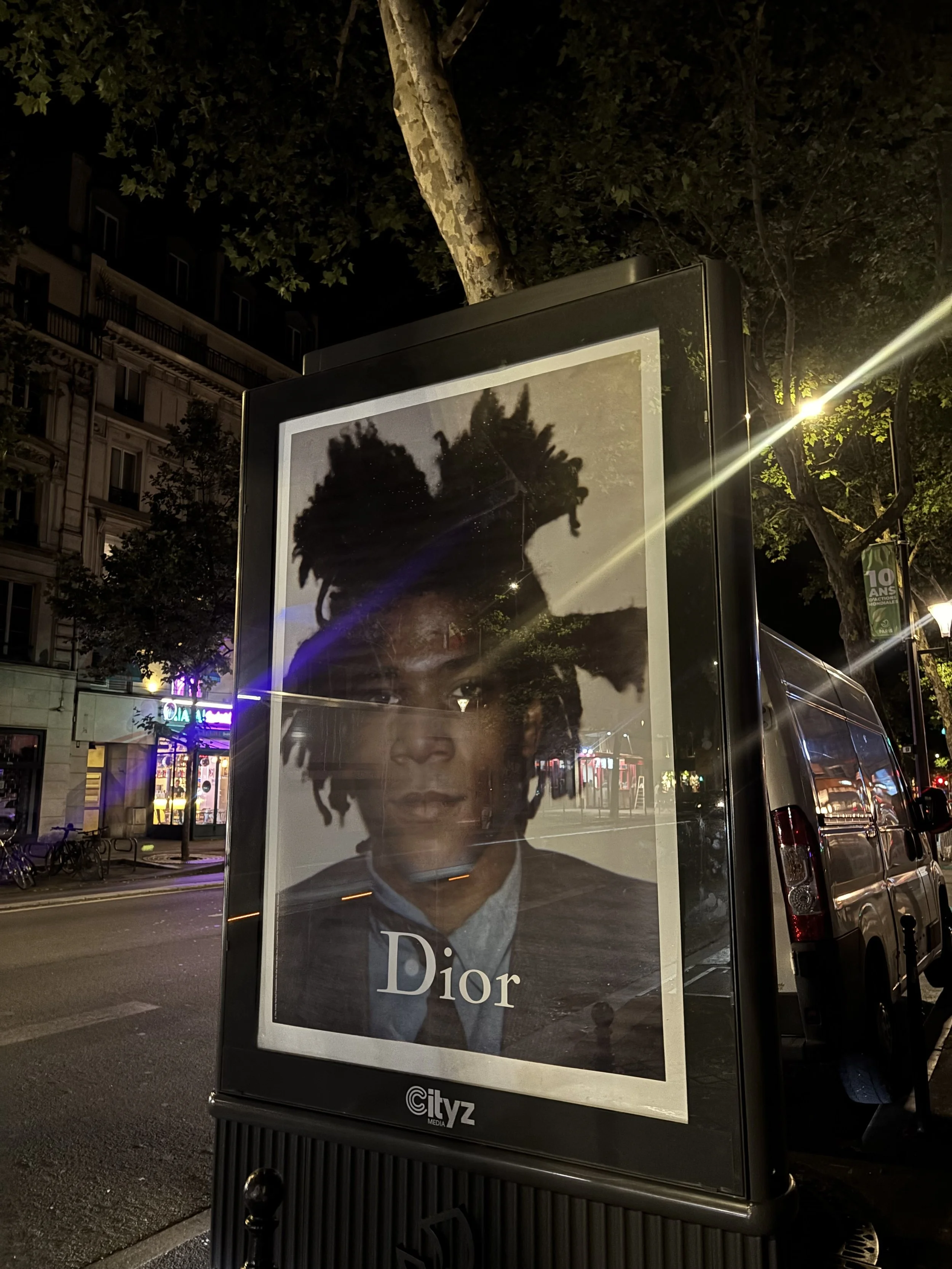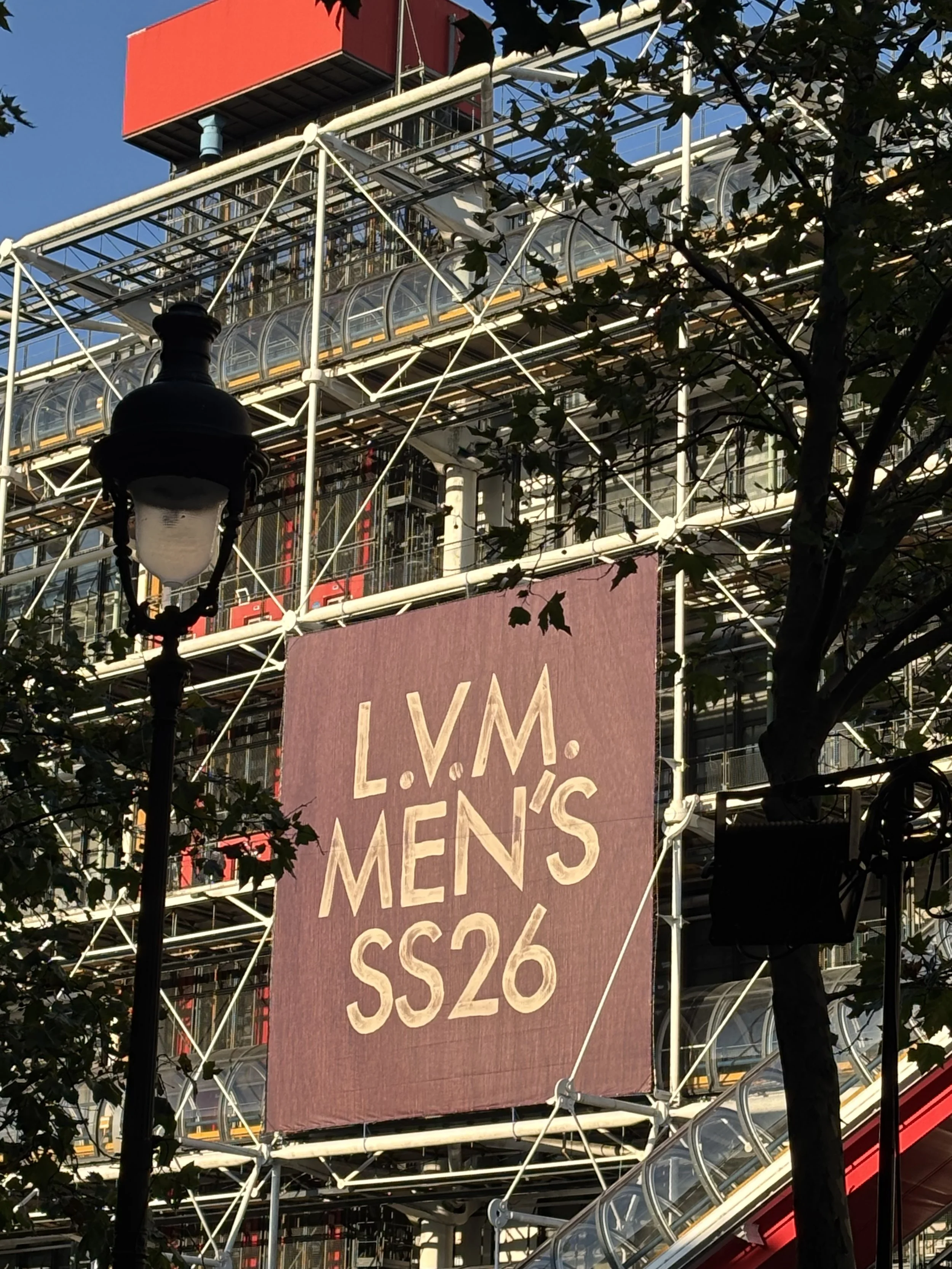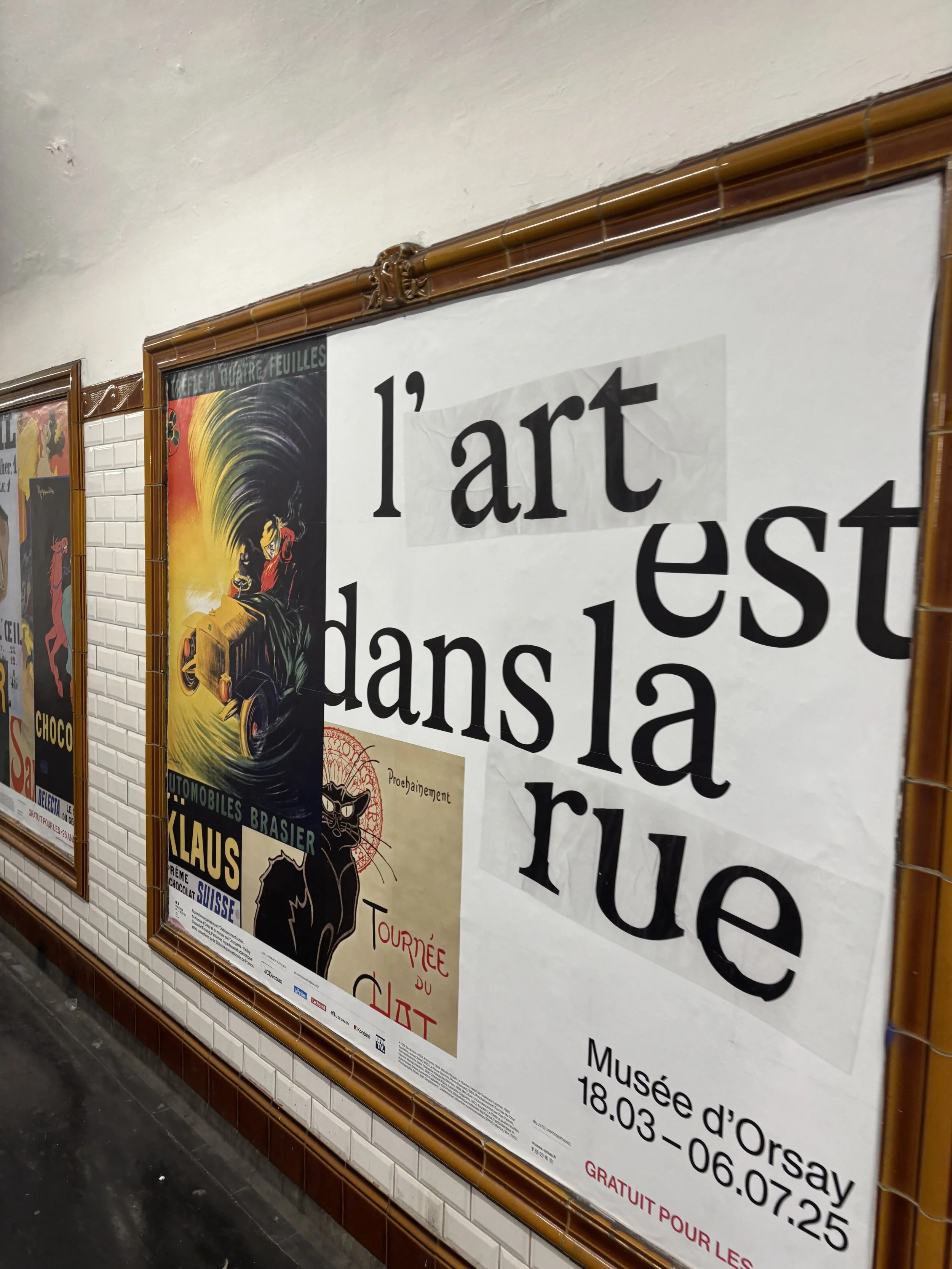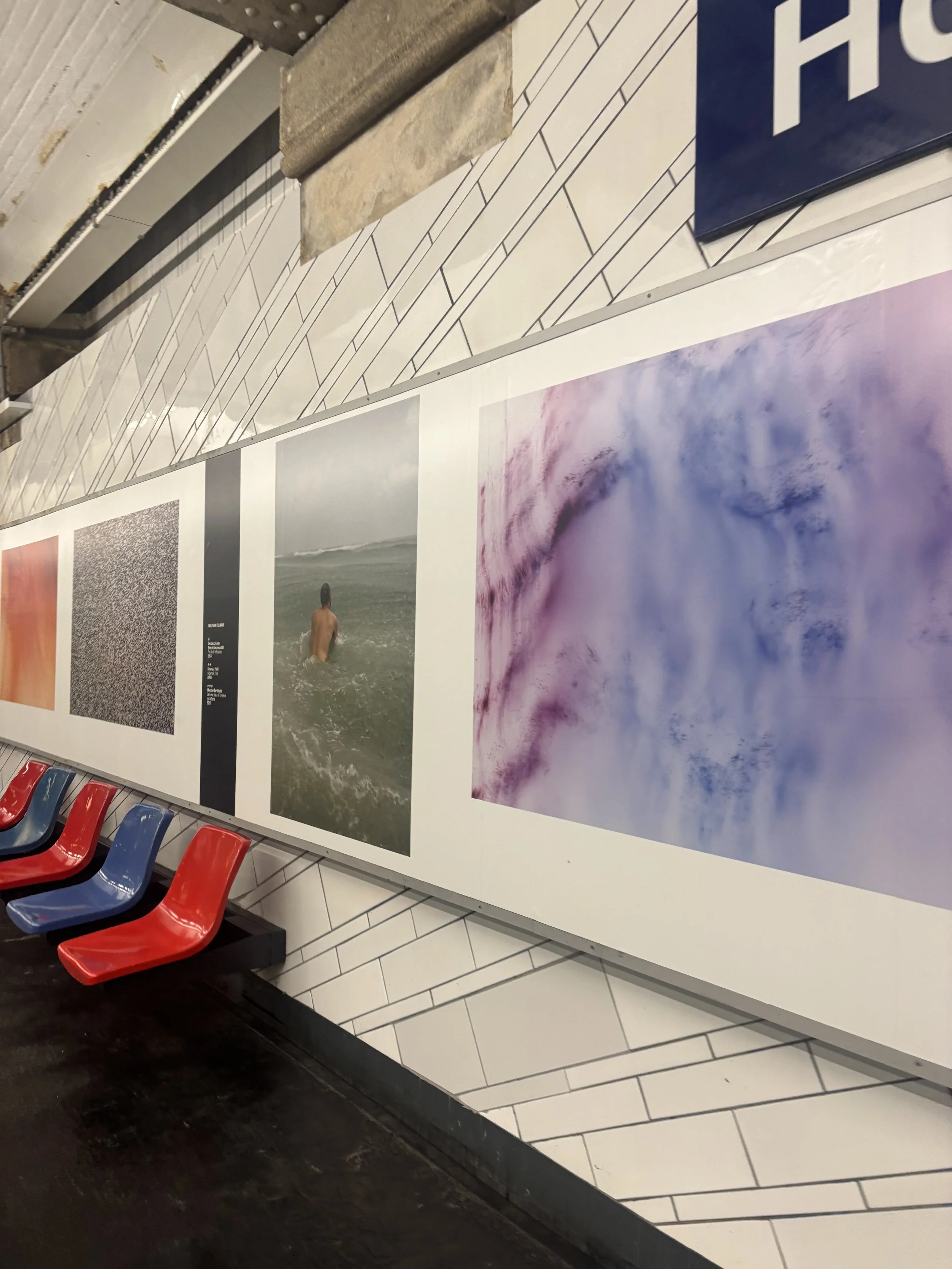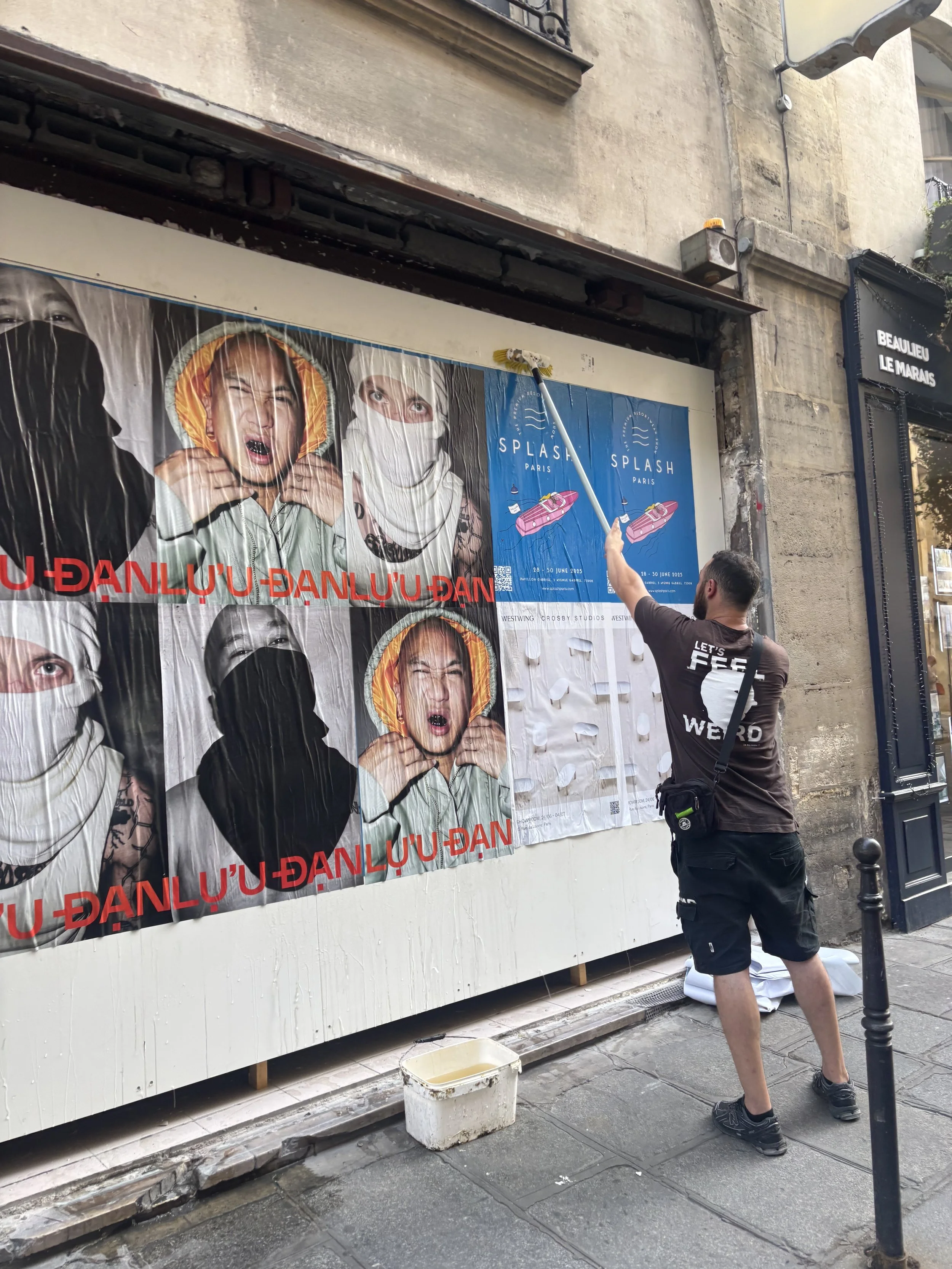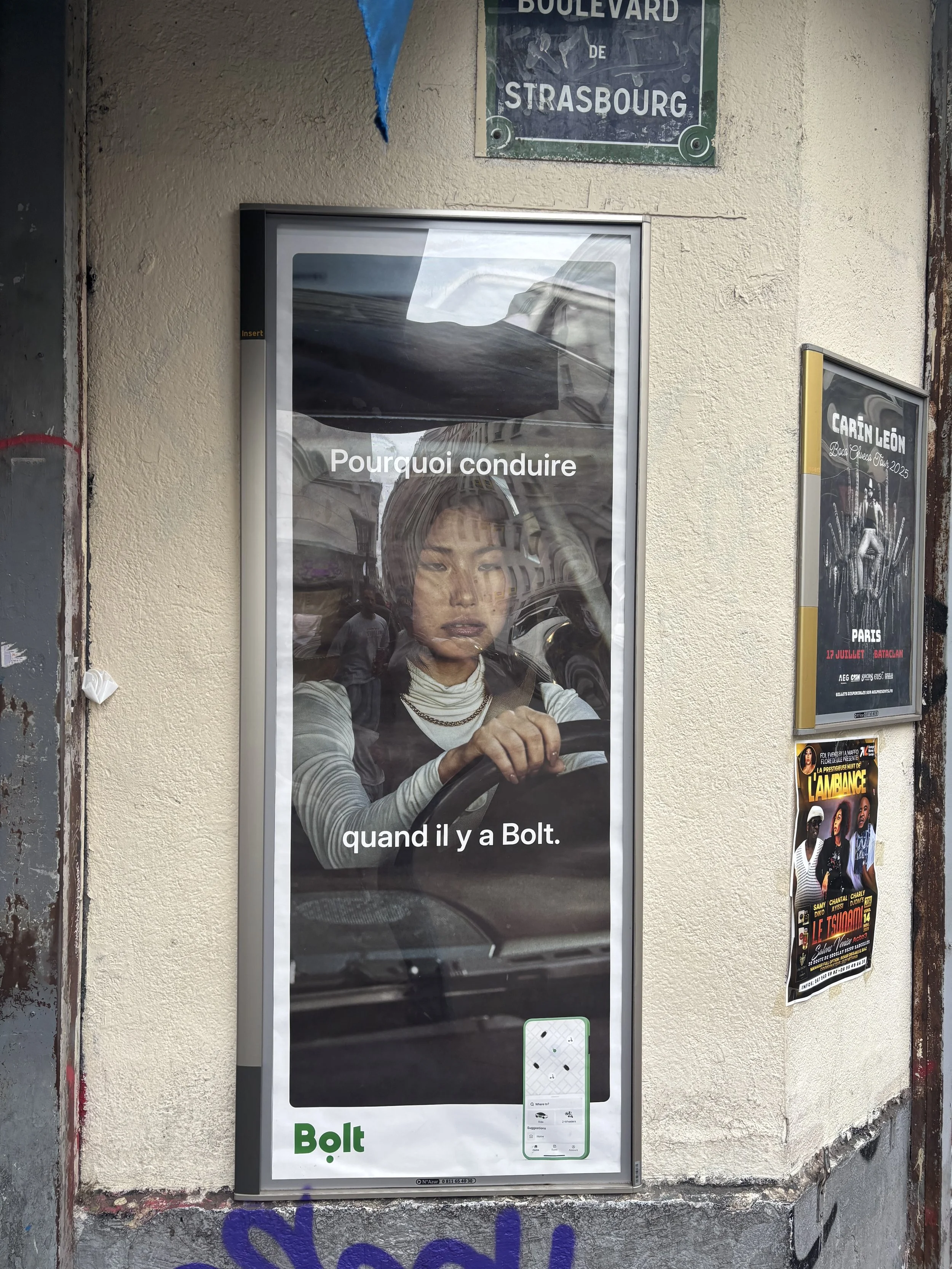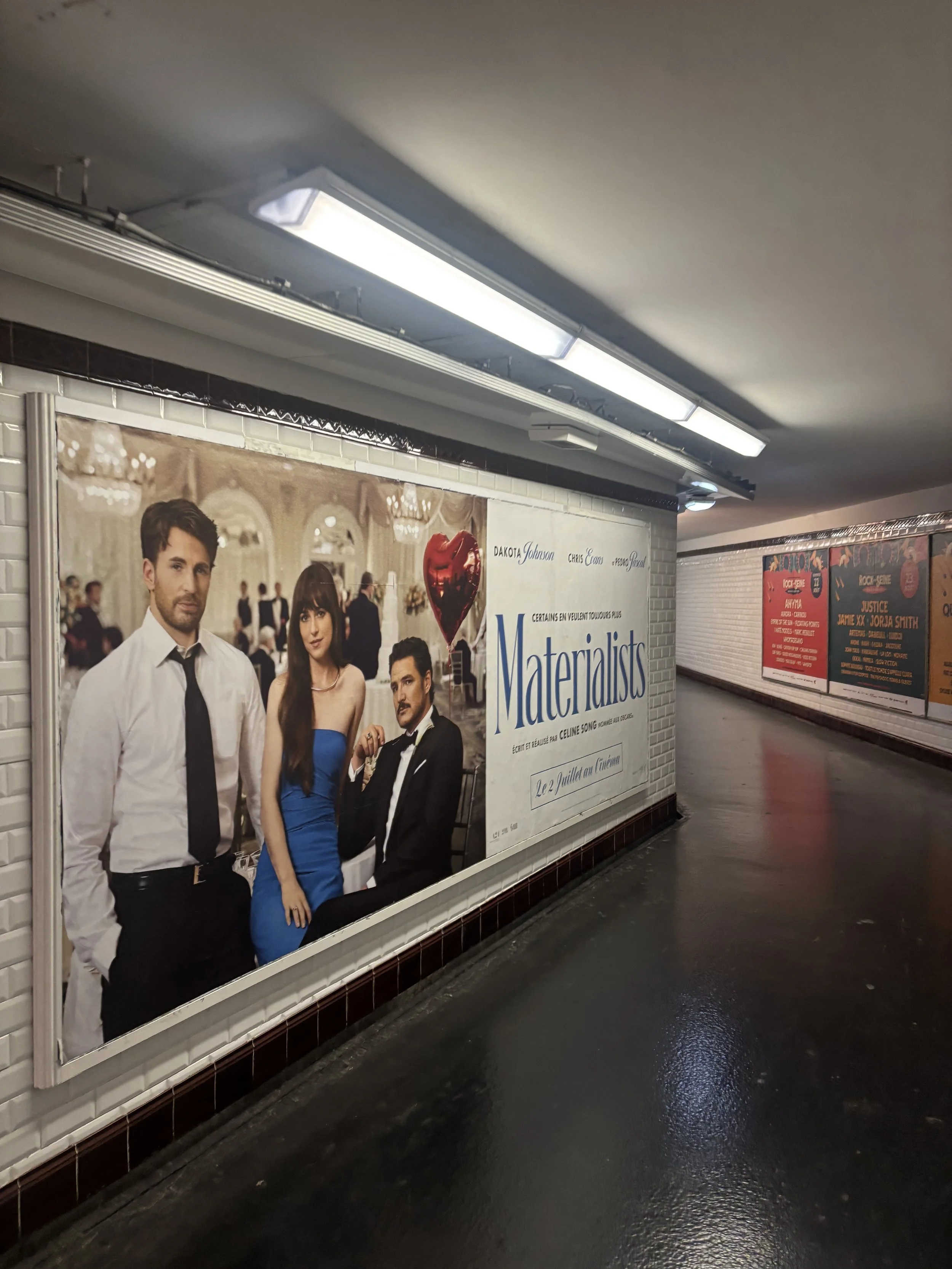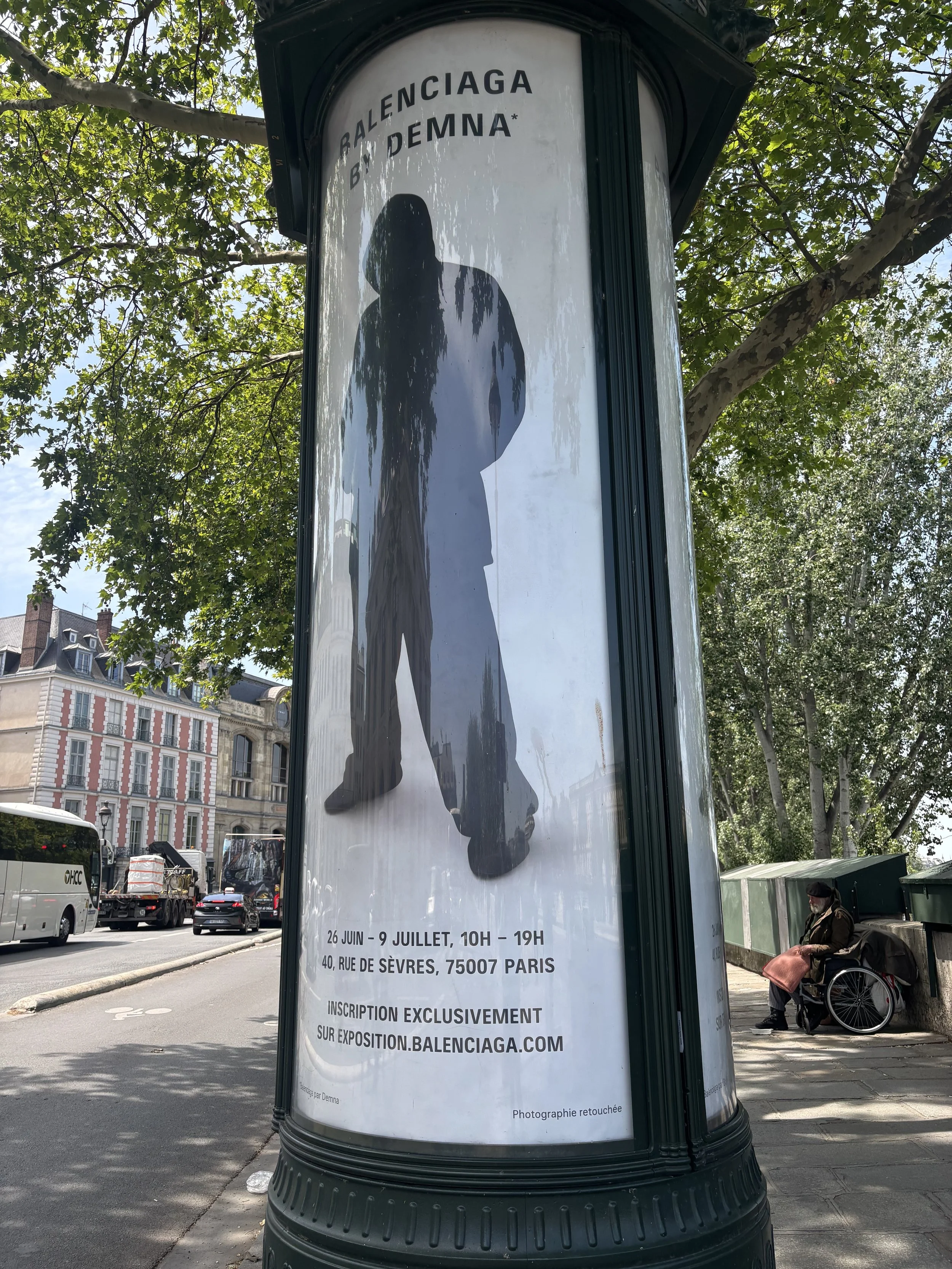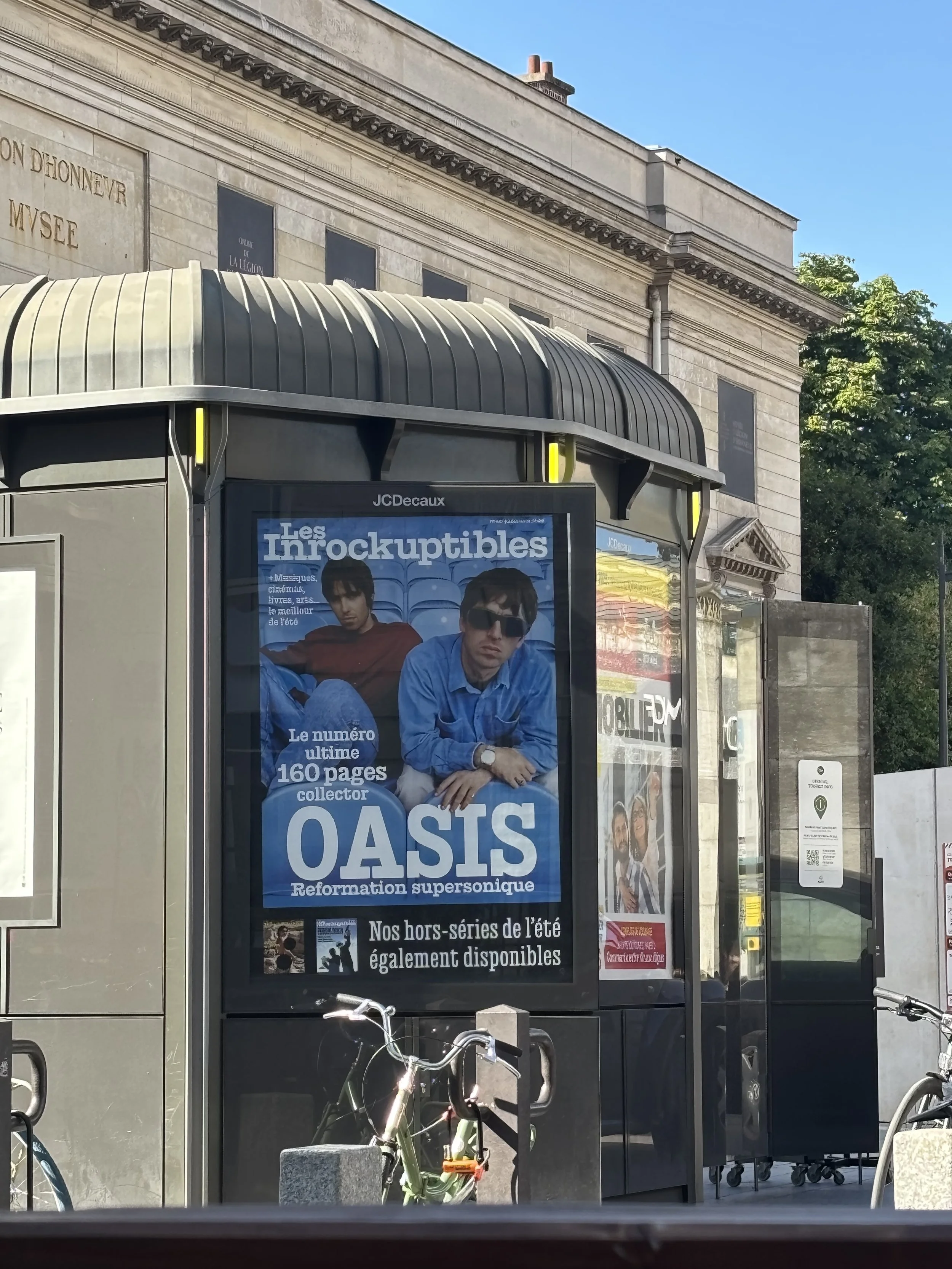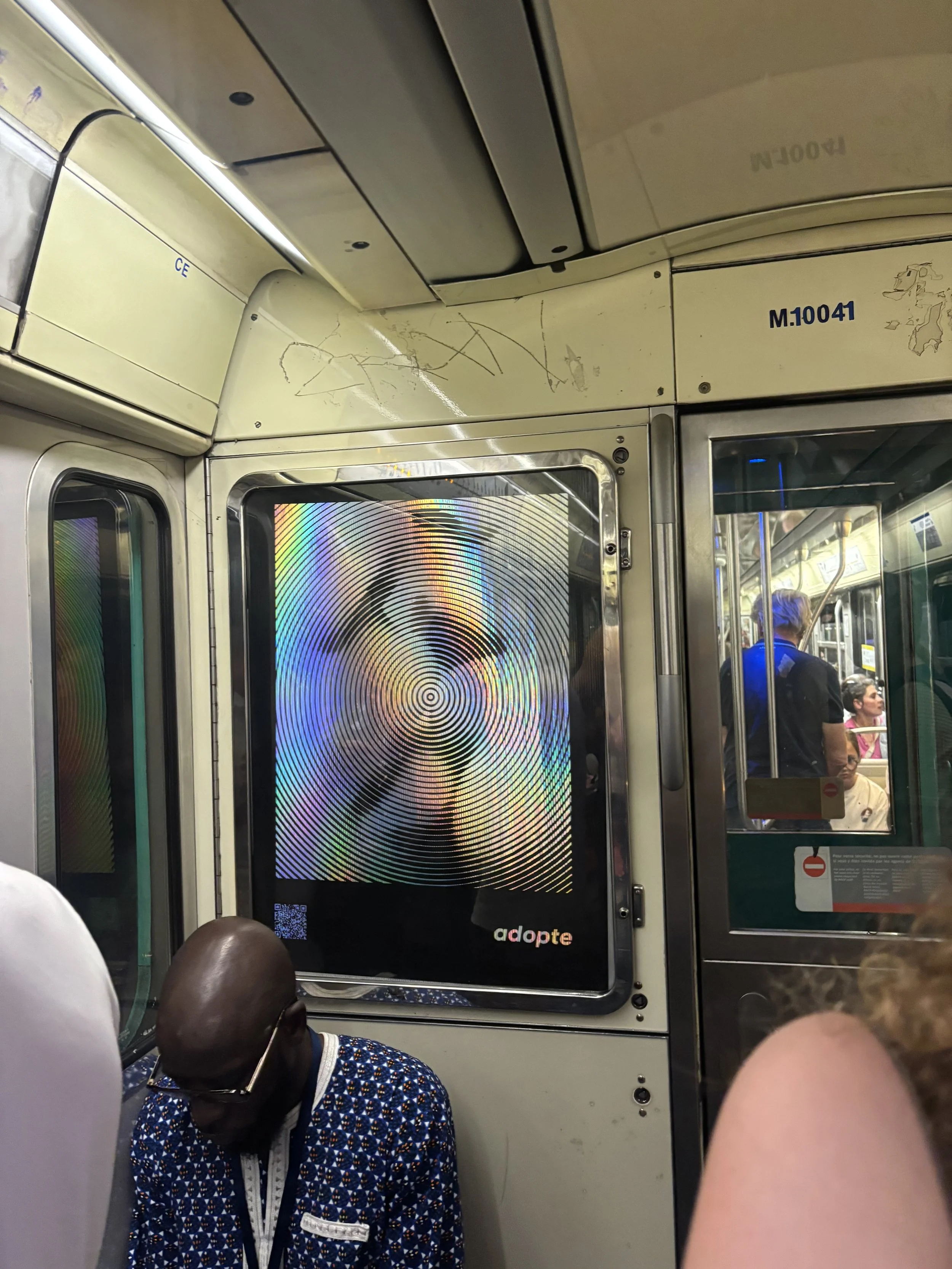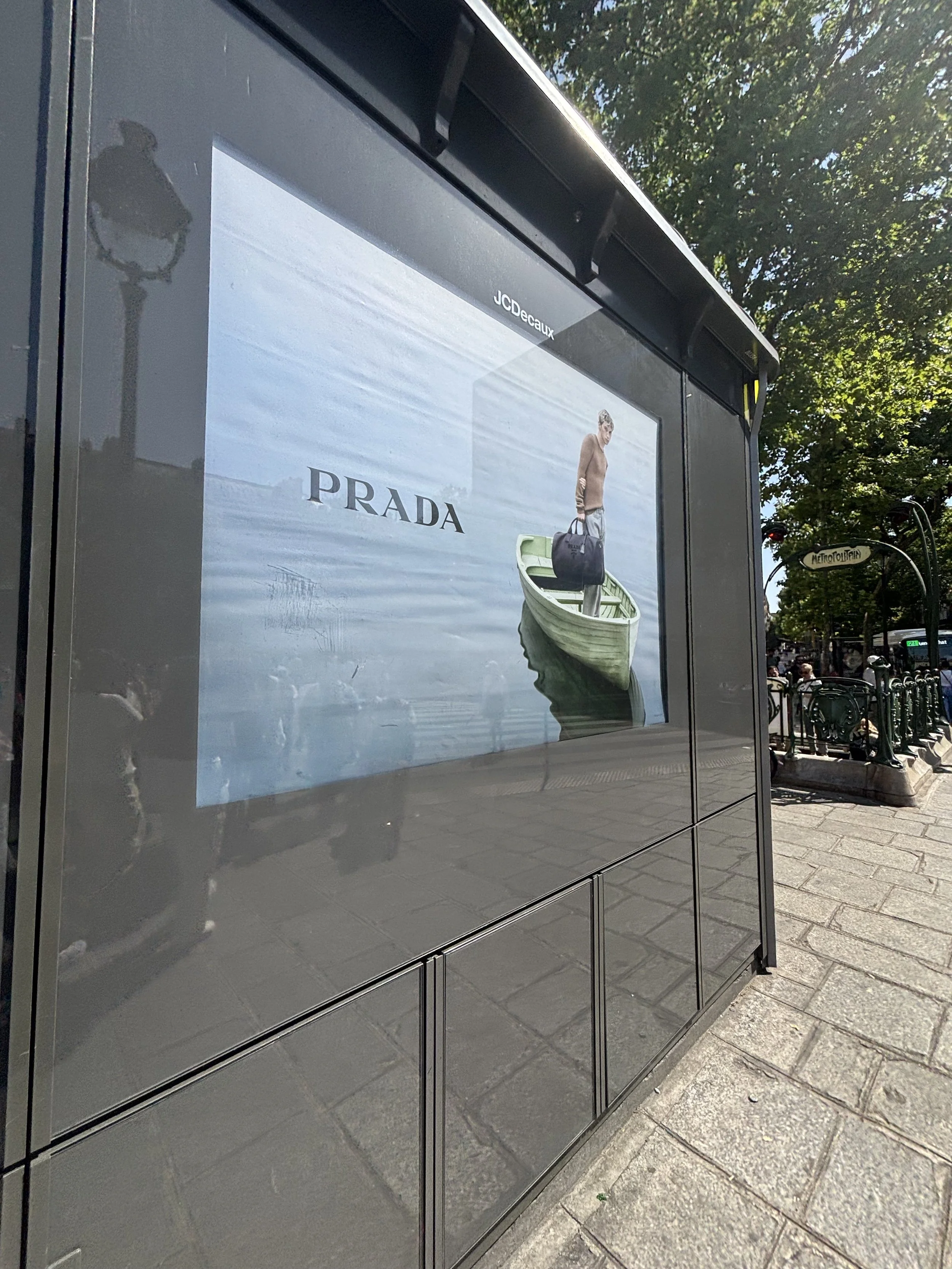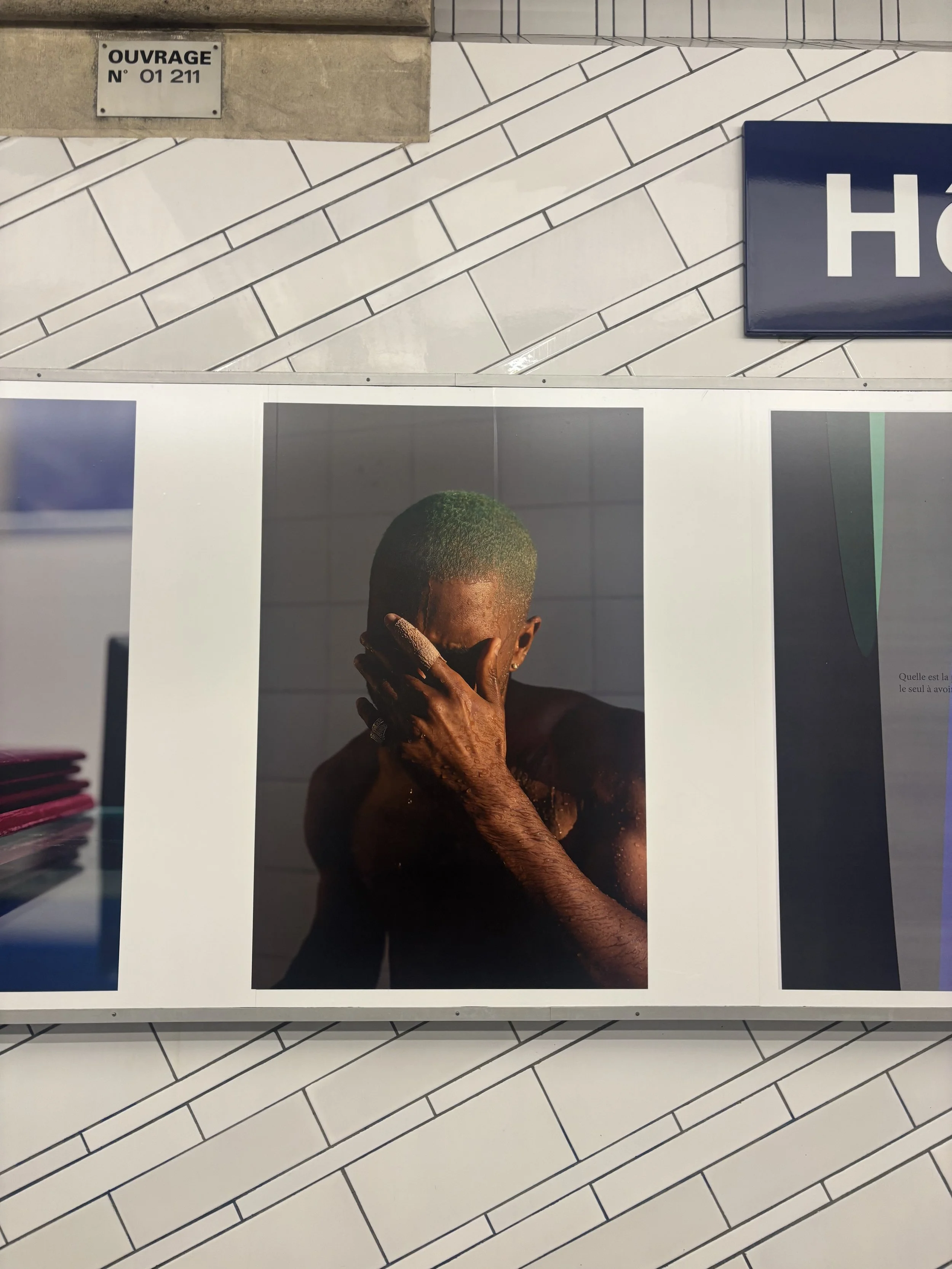Parisian Advertising
In June of 2025, I spent two weeks in Paris, walking the streets, traveling on the Métro, and absorbing the variety of advertising posted throughout the city. I decided, after witnessing the preliminary advertising for Men’s Fashion Week that I would document ads I found interesting or compelling.
-
Jonathan Anderson first struck me through his work at the luxury brand Loewe, a brand known mostly for its leather goods, before his takeover. He transformed Loewe into a true ready-to-wear designer brand that was desirable for other creatives to engage with. His work in costuming Luca Guadagnino’s films, Challengers, and Queer highlighted his dedication to art and going beyond the fashion space, and in turn familiarizing unknowing filmgoers with the brand. I was thrilled when I heard the news of his sole creative director appointment at Dior.
When I booked my trip to Paris, I hadn’t realized I would be there for his showcase as the sole creative director. Yet the minute I arrived, I was presented with images of his moodboard displayed all across the city. The 1982 portrait of Jean-Michel Basquiat, photographed by Andy Warhol, was the ad itself, highlighting the return to the original Dior logo (formerly changed by Maria Grazia Chiuri). To me, it propounded Anderson’s desire to marry art and fashion. He stated that "As I started on this journey, I kept returning to these photographs of Basquiat and Radziwill, who are both, for me, the epitome of style" (other moodboard photos released included a Warhol Polaroid portrait of Lee Radziwill in 1972). This ad, to me, suggests his vision of classic but cool elegance, while also drawing in the mass appeal of Warhol and Basquiat. Additionally, hinting at his play into Basquiat’s style.
I was lucky enough to wait outside the Louis Vuitton Men’s Collection presented by Pharrell at the Pompidou; my friends and I were searching to see the stars who were appearing. I was most excited about the prospect of seeing Anderson, knowing he would be presenting his collection that Friday. Sure enough, he strolled in, the crowds too busy looking at those being photographed, essentially unnoticed. He donned a pair of what seemed to be classic Wayfarer Ray-Bans (reminiscent of Basquiat) with a button-up, slightly rolled up at the sleeves. It stunned me that the crowd was unaware of the mass talent that walked right in front of our eyes, but it also made me think of him as so much cooler. Witnessing this ensured to me that Dior is soon to be the epitome of cool (once again); he is going to bring back the classic elegance that was once attributed to old Hollywood stars or Carolyn Bessette Kennedy, which I feel has been absent from the fashion world for some time. Anderson is bringing back effortless style, something he embodies himself.
The invitation to his collection was a plate with three porcelain eggs resting upon it, from within the Dior archives. For Anderson, this was a call back to one of his favorite paintings, by Lucian Freud, “Four Eggs on a Plate.” To him, it is symbolic of “the start of something.” Within his collection, he truly honed in on bringing elements from within the archive, and modernizing it into something both unique and classic. Anderson drew much inspiration from the 18th Century, bringing a tangible sense of elegance and poise to the Dior man. The attention to detail was impeccable, each accessory having a specific purpose and contributing to this marriage of old and new (a perfect example being his interpretation of the Dior Book Tote). The Dior man he presented emulated the eye-catching and suave nature of a classic 1960s movie star (I'm thinking Alain Deleon) with the poise and elegance of a man ripped from the pages of a Jane Austen novel. When watching the playback of the show, many of the pieces confirmed the aesthetic of Anderson’s original moodboard. I viewed several pieces and saw Basquiat, specifically modeling for Comme des Garçons in 1987, with a tailored suit that felt very 80s and also 18th century. I cannot wait to see what comes next for Jonathan Anderson.
Sources:
-
I was walking out of a metro car when I saw the advertisement for the Wolfgang Tillmans exhibition at the Pompidou. With the museum just five minutes from my apartment, it seemed like a perfect afternoon out. Learning the exhibition was centered around Tillmans—a German photographer known for capturing people “actually living,” including members of the LGBTQ+ community, Frank Ocean’s Blonde cover, and work for i-D magazine—I decided to buy a ticket.
The exhibit, personally curated by Tillmans, took place on the second level of the Beaubourg building of the Pompidou, which previously was the space that held the Bibliothèque Publique d’Information (Public Information Library). The setting, in many ways, enhanced the atmosphere established by the photos. To me, it felt almost futuristic, as well as very raw. All in all, through the variety of media presented and the range of subjects photographed, it was a distinct showcase that I will not forget.
Why I am writing about this, though, is it called attention to my desire to enter the advertising realm. I found it impactful that advertising is what got me to see such a unique and challenging artist. The ad I saw stopped me in my tracks; the photos were the ad, and the images are the exhibit. To me, it showcased that advertising can be so much more than something on the television or a promotion of a product, but can serve as an intermediary between art and the viewer.
Sources
